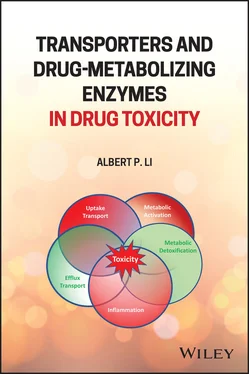127 127 Jindal A, Gupta A, Sarin S. Obeticholic acid in primary biliary cholangitis. N Engl J Med 2016; 375 (20):e41.
128 128 Jones DE. Obeticholic acid for the treatment of primary biliary cirrhosis. Expert Rev Gastroenterol Hepatol 2016; 10(10):1091–1099.
129 129 Silveira MG, Lindor KD. Obeticholic acid and budesonide for the treatment of primary biliary cirrhosis. Expert Opin Pharmacother 2014; 15(3):365–72.
130 130 Forman BM, Goode E, Chen J, Oro AE, Bradley DJ, Perlmann T, et al. Identification of a nuclear receptor that is activated by farnesol metabolites. Cell 1995; 81(5):687–93.
131 131 Parks DJ, Blanchard SG, Bledsoe RK, Chandra G, Consler TG, Kliewer SA, et al. Bile acids: natural ligands for an orphan nuclear receptor. Science 1999; 284 (5418):1365–8.
132 132 Wang H, Chen J, Hollister K, Sowers LC, Forman BM. Endogenous bile acids are ligands for the nuclear receptor FXR/BAR. Mol Cell 1999; 3(5):543–53.
133 133 Lu TT, Makishima M, Repa JJ, Schoonjans K, Kerr TA, Auwerx J, et al. Molecular basis for feedback regulation of bile acid synthesis by nuclear receptors. Mol Cell 2000; 6(3):507–15.
134 134 Ananthanarayanan M, Balasubramanian N, Makishima M, Mangelsdorf DJ, Suchy FJ. Human bile salt export pump promoter is transactivated by the farnesoid X receptor/bile acid receptor. J Biol Chem 2001; 276 (31):28857–65.
135 135 Frankenberg T, Rao A, Chen F, Haywood J, Shneider BL, Dawson PA. Regulation of the mouse organic solute transporter alpha‐beta, Ostalpha‐Ostbeta, by bile acids. Am J Physiol Gastrointest Liver Physiol 2006; 290(5):G912–22.
136 136 Landrier JF, Eloranta JJ, Vavricka SR, Kullak‐Ublick GA. The nuclear receptor for bile acids, FXR, transactivates human organic solute transporter‐alpha and ‐beta genes. Am J Physiol Gastrointest Liver Physiol 2006; 290(3):G476–85.
137 137 Hirschfield GM, Mason A, Luketic V, Lindor K, Gordon SC, Mayo M, et al. Efficacy of obeticholic acid in patients with primary biliary cirrhosis and inadequate response to ursodeoxycholic acid. Gastroenterology 2015; 148(4):751–61 e8.
138 138 Ali AH, Lindor KD. Obeticholic acid for the treatment of primary biliary cholangitis. Expert Opin Pharmacother 2016; 17 (13):1809–15.
139 139 Erlinger S. Obeticholic acid in primary biliary cholangitis. Clin Res Hepatol Gastroenterol 2017; 41(1):3–5.
140 140 Nevens F, Lindor KD, Jones DE. Obeticholic acid in primary biliary cholangitis. N Engl J Med 2016; 375 (20):e41.
141 141 Spacek LA, Solga SF. Obeticholic acid in primary biliary cholangitis. N Engl J Med. 2016; 375 (20):e41.
142 142van Golen RF. Obeticholic acid in primary biliary cholangitis. N Engl J Med 2016; 375 (20):e41.
143 143 Quigley G, Al Ani M, Nadir A. Occurrence of jaundice following simultaneous ursodeoxycholic acid cessation and obeticholic acid initiation. Dig Dis Sci 2018; 63(2):529–32.
144 144 Chiang JY. Bile acid metabolism and signaling. Compr Physiol 2013; 3(3):1191–212.
145 145 Li T, Chiang JY. Nuclear receptors in bile acid metabolism. Drug Metab Rev 2013; 45(1):145–55.
146 146 Li T, Chiang JY. Bile acid signaling in liver metabolism and diseases. J Lipids 2012; 2012:754067.
147 147 Edwards JE, Eliot L, Parkinson A, Karan S, MacConell L. Assessment of pharmacokinetic interactions between obeticholic acid and caffeine, midazolam, warfarin, dextromethorphan, omeprazole, rosuvastatin, and digoxin in phase 1 studies in healthy subjects. Adv Ther 2017; 34(9):2120–38.
148 148 Zhang Y, Jackson JP, St Claire RL, 3rd, Freeman K, Brouwer KR, Edwards JE. Obeticholic acid, a selective farnesoid X receptor agonist, regulates bile acid homeostasis in sandwich‐cultured human hepatocytes. Pharmacol Res Perspect. 2017; 5(4), e00329.
149 149 Guo C, LaCerte C, Edwards JE, Brouwer KR, Brouwer KLR. Farnesoid X receptor agonists obeticholic acid and chenodeoxycholic acid increase bile acid efflux in sandwich‐cultured human hepatocytes: functional evidence and mechanisms. J Pharmacol Exp Ther 2018; 365(2):413–21.
150 150 Kahler CM, Graziadei I, Vogelsinger H, Desole S, Cima K, Vogel W. Successful treatment of portopulmonary hypertension with the selective endothelin receptor antagonist Sitaxentan. Wien Klin Wochenschr 2011; 123 (7–8):248–52.
151 151 Scott LJ. Sitaxentan: in pulmonary arterial hypertension. Drugs 2007; 67(5):761–70; discussion 71‐2.
152 152 Gholam P, Sehr T, Enk A, Hartmann M. Successful treatment of systemic‐sclerosis‐related digital ulcers with a selective endothelin type A receptor antagonist (sitaxentan). Dermatology 2009; 219(2):171–3.
153 153 Zhang J, Kong W, Wang C. Mechanism of plasma endothelin‐1 level elevation and its relation with pulmonary hypertension in chronic cor pulmonale. Zhonghua Nei Ke Za Zhi 1996; 35(2):110–3.
154 154 Galie N, Hoeper MM, Simon J, Gibbs R, Simonneau G, Task Force for the D, et al. Liver toxicity of sitaxentan in pulmonary arterial hypertension. Eur Heart J 2011; 32(4):386–7.
155 155 Lavelle A, Sugrue R, Lawler G, Mulligan N, Kelleher B, Murphy DM, et al. Sitaxentan‐induced hepatic failure in two patients with pulmonary arterial hypertension. Eur Respir J 2009; 34(3):770–1.
156 156 Lee WT, Kirkham N, Johnson MK, Lordan JL, Fisher AJ, Peacock AJ. Sitaxentan‐related acute liver failure in a patient with pulmonary arterial hypertension. Eur Respir J 2011; 37(2):472–4.
157 157 Hoeper MM, Olsson KM, Schneider A, Golpon H. Severe hepatitis associated with sitaxentan and response to glucocorticoid therapy. Eur Respir J 2009; 33(6):1518–9.
158 158 Owen K, Cross DM, Derzi M, Horsley E, Stavros FL. An overview of the preclinical toxicity and potential carcinogenicity of sitaxentan (Thelin(R)), a potent endothelin receptor antagonist developed for pulmonary arterial hypertension. Regul Toxicol Pharmacol 2012; 64(1):95–103.
159 159 Erve JC, Gauby S, Maynard JW, Jr., Svensson MA, Tonn G, Quinn KP. Bioactivation of sitaxentan in liver microsomes, hepatocytes, and expressed human P450s with characterization of the glutathione conjugate by liquid chromatography tandem mass spectrometry. Chem Res Toxicol 2013; 26(6):926–36.
160 160 Whitley RJ. Sorivudine: a potent inhibitor of varicella zoster virus replication. Adv Exp Med Biol 1996; 394:41–4.
161 161 Whitley RJ. Sorivudine: a promising drug for the treatment of varicella‐zoster virus infection. Neurology 1995; 45 (12 Suppl 8):S73–5.
162 162 Burdge DR, Voigt R, Lindley JI, Gage L, Sacks SL. Sorivudine (BV‐ara‐U) for the treatment of complicated refractory varicella zoster virus infection in HIV‐infected patients. AIDS 1995; 9(7):810–2.
163 163 Pinnolis MK, Foxworthy D, Kemp B. Treatment of progressive outer retinal necrosis with sorivudine. Am J Ophthalmol 1995; 119(4):516–7.
164 164 Wunderli W, Miner R, Wintsch J, von Gunten S, Hirsch HH, Hirschel B. Outer retinal necrosis due to a strain of varicella‐zoster virus resistant to acyclovir, ganciclovir, and sorivudine. Clin Infect Dis 1996; 22(5):864–5.
165 165 Bodsworth NJ, Boag F, Burdge D, Genereux M, Borleffs JC, Evans BA, et al. Evaluation of sorivudine (BV‐araU) versus acyclovir in the treatment of acute localized herpes zoster in human immunodeficiency virus‐infected adults. The Multinational Sorivudine Study Group. J Infect Dis 1997; 176(1):103–11.
166 166 Okuda H, Nishiyama T, Ogura K, Nagayama S, Ikeda K, Yamaguchi S, et al. Lethal drug interactions of sorivudine, a new antiviral drug, with oral 5‐fluorouracil prodrugs. Drug Metab Dispos 1997; 25(5):270–3.
167 167 Okuda H, Ogura K, Kato A, Takubo H, Watabe T. A possible mechanism of eighteen patient deaths caused by interactions of sorivudine, a new antiviral drug, with oral 5‐fluorouracil prodrugs. J Pharmacol Exp Ther 1998; 287(2):791–9.
Читать дальше












